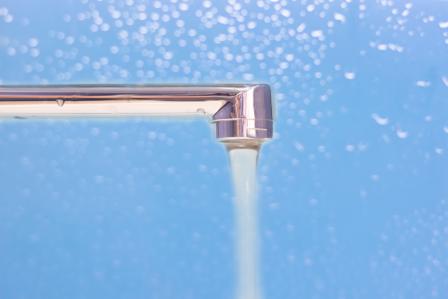Proposed Revisions to the Lead and Copper Rule
 EPA’s proposed Lead and Copper Rule (LCR) includes a suite of actions to reduce lead exposure in drinking water where it is needed the most. The proposed rule will identify the most at-risk communities and ensure systems have plans in place to rapidly respond by taking actions to reduce elevated levels of lead in drinking water.
EPA’s proposed Lead and Copper Rule (LCR) includes a suite of actions to reduce lead exposure in drinking water where it is needed the most. The proposed rule will identify the most at-risk communities and ensure systems have plans in place to rapidly respond by taking actions to reduce elevated levels of lead in drinking water.
The agency’s proposal takes a proactive and holistic approach to improving the current rule—from testing to treatment to telling the public about the levels and risks of lead in drinking water. This approach focuses on six key areas:
- Identifying the areas most impacted
- Strengthening drinking water treatment requirements
- Replacing lead service lines
- Increasing sampling reliability
- Improving risk communication
- Protecting children in schools and child care facilities
In conjunction with today’s announcement, EPA and the Department of Housing and Urban Development have launched a new website that summarizes available federal programs that help finance or fund lead service line replacement. The new resource also includes case studies demonstrating how cities and states have successfully leveraged federal resources to support lead service line (LSL) replacement projects.
EPA’s Lead and Copper Proposed Rule reflects input received from the agency’s state, local, and tribal partners, the Science Advisory Board, the National Drinking Water Advisory Council, and best available peer-reviewed science. The comment period is now closed. To view the Federal Register visit http://www.regulations.gov: Docket ID No. EPA-HQ-OW-2017-0300.
Supporting Materials and Fact Sheets
- Federal Register Notice : National Primary Drinking Water Regulations: Proposed Lead and Copper Rule Revisions
- Federal Register Notice: Comment Extension for National Primary Drinking Water Regulations: Proposed Lead and Copper Rule Revisions
- Infographic: LCR Proposal
- Fact Sheet: Key Improvements of the LCR Proposal
- Fact Sheet: Understanding the Current LCR
- Fact Sheet: Accelerating the Removal of America’s Lead Pipes
- Reference Guide for PWSs: Side by Side Comparison of the Current LCR and Proposal
- Questions and Answers
- Press Release: EPA Proposes Updates to Lead and Copper Rule to Better Protect Children and At-Risk Communities
Background: Lead in Drinking Water and the LCR
 Lead is rarely found in significant quantities in naturally occurring sources of water, such as streams, lakes, rivers, or ground water. The most common sources of lead in drinking water are lead pipes, solder, and brass fittings in faucets and fixtures. Lead from lead pipes, solder and brass fittings can dissolve into water or sometimes can enter as flakes or small particles.
Lead is rarely found in significant quantities in naturally occurring sources of water, such as streams, lakes, rivers, or ground water. The most common sources of lead in drinking water are lead pipes, solder, and brass fittings in faucets and fixtures. Lead from lead pipes, solder and brass fittings can dissolve into water or sometimes can enter as flakes or small particles.
Lead is a highly toxic pollutant that can damage neurological, cardiovascular, immunological, developmental, and other major body systems. No safe level of lead exposure has been identified, and it is especially harmful to children and pregnant women.
EPA established the Lead and Copper Rule (LCR) in 1991 to protect public health and reduce exposure to lead in drinking water. Implementation of the LCR over the past twenty-five years has resulted in major improvements in public health. EPA is continuing to work with primacy agencies to ensure that the LCR is being properly implemented.
- General Information on Lead in Drinking Water
- Background on the Lead and Copper Rule
- Lead and Copper Rule Long-Term Revisions
More Information
- Webinar: Strategic Plan for Targeted Outreach to Populations Affected by Lead (March 2017)
- Memorandum: Implementation of the Lead and Copper Rule Provisions Related to Sample Site Selection and Triennial Monitoring (October 2016)
- Document: Optimal Corrosion Control Treatment Evaluation Technical Recommendations (March 2016)
- Memorandum: Clarifying Recommended Tap Sampling Procedures for the Lead and Copper Rule (February 2016)
- EPA Letters to Governors and State Environment and Public Health Commissioners (2016)
